Please Place Evidence of the 7 of 10 Plate Movements Here
Kojima had created small snips of Konstantin's animation of the 7 of 10 Plate Movements.
Here is the full 7 of 10 Animation by Konstantin.
This blog is the place to document ongoing earth changes related to the 7 of 10 plate movements as described by the Zetas.
ZetaTalk: 7 of 10 Sequence
written October 16, 2010
The 7 of 10 scenarios describe plate movements, and for this to occur something has to release the deadlock, the current stalemate where the plates are locked against each other. Once the deadlock is broken and the plates start moving, sliding past each other, new points where the plates are locked against each other develop, but these are weaker locks than the one at present. The current lock, as we have so often stated, is the Indo-Australian Plate which is being driven under the Himalayans. This is no small lock, as the height of the Himalayans attests. Nevertheless, the activity in this region shows this likely to be the first of the 7 of 10 scenarios to manifest. Bangladesh is sinking and the Coral Sea is rising, showing the overall tipping of the Indo-Australian Plate. Now Pakistan is sinking and not draining its floods as it should, while Jakarta on the tongue of Indonesia is also sinking rapidly, showing that the tilt that will allow Indonesia to sink has already started.
Meanwhile, S America is showing signs of a roll to the west. Explosions on islands just to the north of the S American Plate occurred recently, on Bonaire and Trinidad-Tobago, and the Andes are regularly being pummeled. There is a relationship. As the Indo-Australia Plate lifts and slides, this allows the Pacific plates to shift west, which allows S America to shift west also. This is greatly increased by the folding of the Mariana Trench and the Philippine Plate. But it is the Indo-Australian Plate that gives way to incite change in these other plates, and this is what is manifesting now to those closely following the changes. Once the folding of the Pacific has occurred, Japan has been destabilized. We are not allowed to give a time frame for any of these plate movements, but would point out that it is not until the North Island of Japan experiences its strong quakes that a tsunami causing sloshing near Victoria occurs. There are clues that the New Madrid will be next.
Where the N American continent is under great stress, it has not slipped because it is held in place on both sides. The Pacific side holds due to subduction friction along the San Andreas, and the Atlantic side holds due to the Atlantic Rift's reluctance to rip open. What changes this dynamic? When S America rolls, almost in step with the folding Pacific, it tears the Atlantic Rift on the southern side. This allows Africa freedom to move and it rolls too, dropping the Mediterranean floor above Algeria. What is holding the N American continent together has thus eased, so that when the Japan adjustments are made, there is less holding the N American continent in place than before, and the New Madrid gives way. We are also not allowed to provide the time frame between the Japan quakes and New Madrid. Other than the relationship in time between the New Madrid and the European tsunami, no time frame can be given. The sequence of events is, thus:
- a tipping Indo-Australia Plate with Indonesia sinking,
- a folding Pacific allowing S America to roll,
- a tearing of the south Atlantic Rift allowing Africa to roll and the floor of the Mediterranean to drop,
- great quakes in Japan followed by the New Madrid adjustment,
- which is followed almost instantly by the tearing of the north Atlantic Rift with consequent European tsunami.
Source: http://www.zetatalk.com/index/zeta584.htm
Tipping Indo-Australia Plate with Indonesia sinking,
http://zetatalk.com/7of10/7of10-23.htm
http://zetatalk.com/7of10/7of10-24.htm
http://zetatalk.com/7of10/7of10-25.htm
http://zetatalk.com/7of10/7of10-26.htm
http://zetatalk.com/7of10/7of10-28.htm
http://zetatalk.com/7of10/7of10-30.htm
http://zetatalk.com/7of10/7of10-31.htm
http://zetatalk.com/7of10/7of10-32.htm
http://zetatalk.com/7of10/7of10-34.htm
http://zetatalk.com/7of10/7of10-37.htm
Folding Pacific
http://zetatalk.com/7of10/7of10-33.htm
http://zetatalk.com/7of10/7of10-38.htm
http://www.zetatalk.com/info/tinfx351.htm
http://zetatalk.com/7of10/7of10-47.htm
South American Roll
http://zetatalk.com/7of10/7of10-39.htm
http://zetatalk.com/7of10/7of10-40.htm
http://zetatalk.com/7of10/7of10-41.htm
http://zetatalk.com/7of10/7of10-42.htm
http://zetatalk.com/7of10/7of10-43.htm
http://zetatalk.com/7of10/7of10-44.htm
http://zetatalk.com/7of10/7of10-45.htm
http://zetatalk.com/7of10/7of10-47.htm
African Roll
http://www.zetatalk.com/7of10/7of10-46.htm
http://zetatalk.com/7of10/7of10-47.htm
http://zetatalk.com/7of10/7of10-48.htm
http://zetatalk.com/7of10/7of10-52.htm
Japan Quakes
http://www.zetatalk.com/7of10/7of10-53.htm
http://zetatalk.com/7of10/7of10-54.htm
New Madrid
http://www.zetatalk.com/7of10/7of10-59.htm
http://www.zetatalk.com/7of10/7of10-60.htm
http://zetatalk.com/7of10/7of10-61.htm
http://www.zetatalk.com/7of10/7of10-62.htm
http://zetatalk.com/7of10/7of10-63.htm
http://zetatalk.com/7of10/7of10-64.htm
http://zetatalk.com/7of10/7of10-65.htm
http://zetatalk.com/7of10/7of10-68.htm
European Tsunami
http://zetatalk.com/7of10/7of10-70.htm
http://zetatalk.com/7of10/7of10-71.htm
http://zetatalk.com/7of10/7of10-72.htm
http://zetatalk.com/7of10/7of10-73.htm
http://zetatalk.com/7of10/7of10-74.htm
Due to the slowing of the 7 of 10 plate movements by the Council of Worlds the impact of some of the events described above will be lessened.
The Zetas explain:
ZetaTalk: Pace Slowed
Written May 19, 2012
The effect of the thousands of humming boxes placed along fault lines and plate borders can be seen in several incidents that have occurred since the start of the 7 of 10 plate movements. The lack of tsunami during the 7 of 10 sinking of the Sunda Plate is one such example. We predicted at the start of the 7 of 10 scenarios in late 2010 that the Sunda Plate sinking would occur within 2-3 weeks, yet it dragged on through 2011. At the time we had predicted tsunami on the Sunda Plate, in general equivalent in height to the loss of elevation for a coastline. None of this occurred due to the slower pace.
The pace of mountain building in S America, where slowed, has still resulted in rumpling up and down the Andes, and stretch zone accidents likewise in lands to the east of the Andes. The shape of S America has clearly changed. Will the islands in the Caribbean be spared? At some point, as with the magnitude 7.9 quake in Acapulco on March 2, 2012 a significant adjustment will need to occur, and this will include depressing the Caribbean Plate so it tilts, sinking the islands and lands on that portion of the plate to the degree predicted. But the S American roll will likely continue to avoid the magnitude 8 quakes we originally predicted in deference to slow rumpling mountain building. The African roll was anticipated to be a silent roll in any case, so the slowed pace would not affect the outcome.
Will the slowed pace prevent the 7 of 10 scenarios for the Northern Hemisphere? Bowing of the N American continent has reached the point of pain, with breaking rock booming from coast to coast, but still there have been no significant quakes in the New Madrid area. Yet this is past due, and cannot be held back indefinitely. What has and will continue to occur for the Northern Hemisphere scenarios are silent quakes for Japan, which has already experienced drastic subduction under the north island of Hokkaido where mountain building is occurring as a rumple rather than a jolt. However, the anticipated New Madrid adjustment cannot be achieved without trauma. But this could potentially occur in steps and stages such that any European tsunami would be significantly lessened.
All rights reserved: ZetaTalk@ZetaTalk.com
Source: http://www.zetatalk.com/7of10/7of10109.htm
ZetaTalk , Written March 10, 2012
What happens when the pace of plate movement is slowed? The likelihood of tsunami is definitely reduced, as can be seen in the sinking on the Sunda Plate. The sinking occurred, and is almost complete, yet the possibility of tsunami we predicted for various regions on the Sunda Plate were avoided. The height and force of a tsunami is directly related to the degree of displacement in the sea floor, and if this happens in steps rather than all at once the displacement will be less for any given step.
This bodes well for the European tsunami. If the Council of Worlds is still imposing a slower pace on the 7 of 10 plate movements, this tsunami will definitely be lessened. The tear in the North Atlantic will be slight, each time. The amount of water pouring into this void will be less, each time. And the rebound toward the UK will likewise be less, each time. But our prediction is the worst case situation, and it also reflects what the Earth changes, unabated, would produce.
But what does a slower pace do to land masses where jolting quakes are expected? Does this reduce the overall magnitude of the quakes anticipated? Large magnitude quakes result when a catch point along plate borders is highly resistant, but snapping of rock finally results. Usually there is one place, the epicenter, where this catch point resides and a long distance along the plate border where smaller quakes have prepared the border for easy movement. A point of resistance within the body of a plate, such as the New Madrid, can likewise resist and suddenly give.
There is no way to lessen the resistance at these catch points, though the tension that accompanies such points can be reduced so that the quake itself is delayed. What this means for a slower 7 of 10 pace is that large magnitude quakes will be spread apart in time, and their relationship to our predictions thus able to be camouflaged by the establishment. Where sinking (such as the Caribbean Island of Trinidad) or spreading apart (such as to the west of the Mississippi River) are to occur, these land changes will eventually arrive. But like the sinking of the Sunda Plate, a slower pace unfortunately allows the cover-up time to maneuver and develop excuses.
All rights reserved: ZetaTalk@ZetaTalk.com
Comment
-
Comment by Stanislav on January 19, 2016 at 9:08pm
-
Himalayas subsided by 60 cm after 2015 Nepal earthquake
The Himalayas subsided by up to 60 cm after the April 2015 Nepal earthquake -- but the world's tallest peak, the 8,848-metre Mt Everest was too far from the subsidence area to be affected, researchers have found.
Using satellite technology, researchers found that the Himalayas subsided by up to 60 cm after the April 2015 Nepal earthquake that killed more than 8,000 people.Mount Everest, more than 50 km east of the earthquake zone, was too far away to be affected by the subsidence seen in this event, the researchers said.
The researchers explained that the apparent growth of the Himalayas between earthquakes is a result of a dangerous kink in the regional fault line below Nepal.
This kink had created a ramp 20 km below the surface, with material constantly being pushed up and raising the height of the mountains.
'We have shown that the fault beneath Nepal has a kink in it, creating a ramp 20 km underground. Material is continually being pushed up this ramp, which explains why the mountains were seen to be growing in the decades before the earthquake,” said lead study author John Elliott from Oxford University.
"The earthquake itself then reversed this, dropping the mountains back down again when the pressure was released as the crust suddenly snapped in April 2015,” Elliott noted.
"Using the latest satellite technology, we have been able to precisely measure the land height changes across the entire eastern half of Nepal. The highest peaks dropped by up to 60 cm in the first seconds of the earthquake,” Elliott said.
The study was published in the journal Nature Geoscience. Source: ibnlive.com
-
Comment by Kojima on January 9, 2016 at 2:46am
-
* Monitoring of Ground Motion in REV
http://rev.seis.sc.edu/index.html
http://rev.seis.sc.edu/stations.html
[Folding Pacific (Hawaii)]
* HV.HSSD; Humuluula Sheep Station, Hawaii Digital; 19.60 N, 155.48 W
[2015/12/21 - 2016/01/07]
-
Comment by Kojima on January 9, 2016 at 2:16am
-
* Monitoring of Ground Motion in REV
http://rev.seis.sc.edu/index.html
http://rev.seis.sc.edu/stations.html
[Tearing of the north Atlantic Rift]
* DK.BSD; BORNHOLM SKOVBRYNET, DENMARK; 55.11 N, 14.91 E
[2015/12/31 - 2016/01/07]
-
Comment by Stanislav on December 31, 2015 at 3:25pm
-
South America floods
We have already stated that the Cordoba range would be a safe zone, safe from the tidal waves rushing in from the Atlantic. Hot springs appear in many places around the world, where the crust is thin, primarily due to stretching. Argentina, at Buenos Aires, will experience stretching as the top part of S America is pulled to the west while the tip of S America is nailed firmly at the Antarctic Plate. The bay at Buenos Aires will rip open, as we have stated. Thus inland, in San Luis, there are hot springs. This will not result in volcanic eruptions during the pole shift.
ZetaTalk ™ May 4, 2011
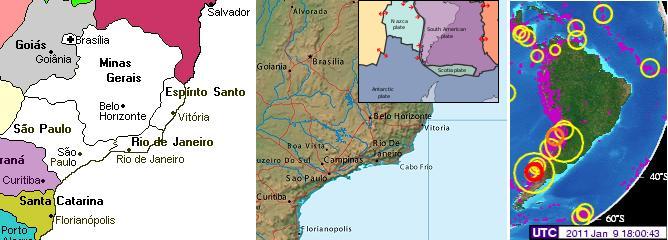
What is the relationship between recent large quakes along the southern Andes and the horrific flooding in several states in SE Brazil? S America is tugging to the west, along its top side. The trend has been in place for many months, with the Caribbean Plate sinking just above Colombia and in Panama. But as much as there is stress along the northern Andes where the S American Plate slides over the Nazca Plate, there is more stress along the southern Andes. Why would this be? The rolls that S America and Africa will do is primarily at the Equator, where the spreading apart of the Atlantic and the compressing of the Pacific is at an accelerated pace. Thus, the plates to the west of the top of S America have already granted S America room to roll.
But as we have explained, the tip of S America does not roll, but remains nailed in place. This is due to the Antarctic Plate, which also abuts the south Andes. The Antarctic Plate is not compressing, as it is one solid piece. For the top portion of S America to roll to the west, something must thus give, and to some extent this is the southeastern portion of S America. There is already a seaway developing at Buenos Aires. But draw a line from the top of the current quake activity along the southern Andes to the southeast coast of Brazil and they line up! For S America to be pulled in a bow like this, the land is stretched, and stretched land sinks. Thus, where they did have rain, the rain was not excessive to the degree to explain the flooding. The inland rivers are not draining properly, due to the stretch and consequent sinking.ZetaTalk ™ January 15, 2011
ZetaTalk: THE STRETCH ZONE, THAT SINKING FEELING
30 December, 2015
30 December, 2013
27 December, 2015 [Click to view 500m resolution Source: EOSDIS Worldview]
El Nino blamed for South America's 'worst flooding in 50 years' Source: ultimahora.com
https://translate.google.com/translate?sl=auto&tl=en&js=y&a...
Many rivers in South America have breached their banks (Jorge Adorno/Reuters) Source: ibtimes.co.uk
Houses are seen partially submerged in floodwaters in Asuncion, December 27, 2015. (REUTERS/JORGE ADORNO) Source: reuters.com
The River Paraguay, which flows by the country's capital, Asuncion, has already reached 7.82 meters (25.66 feet), its highest level since 1992. Source: clarin.com
https://translate.google.com/translate?sl=auto&tl=en&js=y&a...
Air record flooding in Bella Union, Uruguay. Source: twitter.com
27 December, 2015. El Nino blamed for South America's 'worst flooding in 50 years'
Aerial view of Paysandu, flooded by water. Source: elpais.com.uy
https://translate.google.com/translate?sl=auto&tl=en&js=y&a...
At least 150,000 people have fled the border areas of four South American countries after what the "worst flooding in 50 years", brought about by downpours caused by the El Nino weather pattern. Heavy rains have swollen three major rivers affecting Paraguay, Argentina, Uruguay and Brazil.
Paraguay is the hardest hit with around 130,000 people forced to evacuate their homes near the capital city of Asuncion, the BBC reported. About 7,000 residents of Alberdi, which lies south of Asuncion and close to the Paraguayan river, have also been asked to leave their homes.
President Horacio Cartes has declared a state of emergency in Asuncion and several nearby areas, and released $4m (£2.70m) to assist flood-hit families. According to reports, four people have been killed by fallen trees in Paraguay.
"(The flooding) was directly influenced by the El Nino phenomenon which has intensified the frequency and intensity of rains," Paraguay's national emergencies office said.
In Argentina's north-east areas, some 20,000 people have fled their homes. "We are going to have a few complicated months. The consequences will be serious," the governor of Argentine's Corrientes region, Ricardo Colombi, said.
At least two people have died in the floods in Argentina, where Entre Rios, Corrientes and Chaco provinces are the worst affected. National cabinet chief Marcos Pena said Argentina lacked proper infrastructure which will be addressed to prevent future flooding. He said government aid was on its way to flood-affected areas.
In Uruguay, some 9,000 people living near swollen rivers have been forced to leave their homes. The country's emergencies office said it expected the water levels in the rivers to remain high for several days.
In Brazil's south-eastern state of Rio Grande do Sul, at least 7,000 residents have left their homes, civil defence authorities told AFP. Source: ibtimes.co.uk
31 December, 2015. Since December 15th, Paraguay has been in a state of emergency due to flooding caused by unusually heavy rainfall for the season. Paraguayan Red Cross Branch Operations Centres, along with Asunción Municipality and the National Emergency Operations Directorate, estimate that 26,000 families have been affected over 42 zones in different areas of the country. The torrential rains have caused the overflow of the Jejuí, Paraguay, Parana, Estero Yetity, Tebycuary, Tebycuarymi, Aquidaban, Aguaray-mí y Aguaray-Guazú and Ypane rivers.
The majority of the affected population reside in the riverside areas of the city of Asunción and the Central Department. Their proximity to rivers that are prone to flooding exacerbates their existing vulnerabilities. This history of flooding includes May 1983 where 6,700 families were affected, and again in July 2014 where 17,789 families were affected in Asunción alone. The current floods have forced the evacuation of 15,000 families in Asunción to 114 temporary shelters. Source: reliefweb.int
-
Comment by Khan on December 28, 2015 at 1:49am
-
4,300 Earthquakes Hit Indonesia in 2015
27 December, 2015
TEMPO.CO, Jakarta - At least 4,300 earthquakes measuring more than 3 in Richter scale happened in Indonesia in 2015, according to a report. As many as 360 earthquakes among them were felt and 7 of them were destructive.
A seismologist from the Bandung Institute of Technology Irwan Meilano said that on average, in Indonesia, earthquakes happened every day.
Irwan also said that the data was taken from the Meteorology, Climatology and Geophysics Agency (BMKG).
"Ironically, almost all destructive earthquake happen in areas not included in the earthquake map,” Irwan said on Sunday (27/12).
-
Comment by Khan on December 28, 2015 at 1:45am
-
Seismic activity intensifies in Azerbaijan
14 December 2015
By Nigar Orujova
Seismic activity intensified in Azerbaijan as the country faced about 7,000 earthquakes in 2015.
Magnitude of more than 80 earthquakes ranged from 3.1 to 5.9, and tremors of 17 were felt, the Republican Seismological Service Center reported.
Azerbaijan locates in seismically active zone. Scientists believe that seismic zones with the potential to produce dangerous force cover the entire country, while the Alpine-Himalayan seismic belt passes directly through Azerbaijan.
An increase in seismic activity is observed since the beginning of the year in the northern part of Azerbaijan – in Oghuz, Shamakhi-Ismayilli, Shabran seismic zones, as well as in the southern part – the Talysh seismic zone, according to the center.
The seismic activity in the Caspian Sea increased in 2015 compared to the last year, but the level seismic energy released through tremors was lower.
In the first quarter of this year, the magnitude of the strongest earthquakes in the Caspian Sea was 5.4. This earthquake occurred on March 22, but the tremors were not felt.
The strongest earthquake of the second quarter of the year occurred in the Goranboy region (4.7), the third quarter – in the territory of Oghuz region (5.9), and in the fourth quarter again the strongest earthquake hit Oghuz (4.0).
The last earthquake recorded in the country was observed in the Caspian Sea to the north of Baku on December 11. The strength of the quake was 3.4 on the Richter scale; the epicenter was located at a depth of 61 km.
The Seismological Service Center noted that the seismic tension on the southeastern slope of the Greater Caucasus has decreased this year, while it remains the same in regions of the Lesser Caucasus and Talysh Mountains.
In November, the Ecology and Natural Resources Ministry announced that Azerbaijan may face 3-4 magnitude earthquakes in the near future and named zones that have potential risks of earthquakes.
Shaki-Oghuz, Central Caspian seismogenic zone and partly Southeastern sector of Shamakhi seismically active zone were named as areas of potential seismic risk based on the operational analysis of seismic and geodynamic conditions in Azerbaijan in the end of October.
Last year was also marked with an intensification of seismic processes as well as the most powerful earthquakes that Azerbaijan has seen in the past 15 years.
Six earthquakes measuring over 5.0 on the Richter scale occurred in Azerbaijan in 2014, releasing a tremendous volume of energy.
-
Comment by jorge namour on December 8, 2015 at 2:26pm
-
Etna earthquakes, moves the fault of Pernicana: all connected to the eruption, lesions in the streets SICILY ITALY
8 December 2015
Etna earthquakes, tremors associated eruption: hypocenters very shallow seismic resentment particularly significant
http://www.meteoweb.eu/2015/12/terremoti-etna-si-muove-la-faglia-de...
https://translate.google.com/translate?sl=it&tl=en&js=y&...
The 'movement' of the fault of Pernicana, on the north-northeast of the 'Etna, is causing an earthquake swarm with - total - twenty shook the volcano. Three events of greater intensity ', in magnitude, measured by INGV Catania: magnitude 3.8 at 10:28, magnitude 2.9 at 10:32, and magnitude 3.2 at 11:53.
The depth 'epicenter, almost superficial, between 0 and 2 kilometers of events linking earthquakes of the attivita' of eruptive 'Etna. Experts from the National Institute of Geophysics and Volcanology in Catania are monitoring the phenomenon and also checking the deformations to the ground.
There have been reports of roads of the 'Etna presenting the' injuries'. The events were felt in some countries on the slopes of 'Etna, but, at the moment, are not reported damage to property or persons.
-
Comment by Kojima on December 7, 2015 at 3:51pm
-
* Monitoring of Ground Motion in REV
http://rev.seis.sc.edu/index.html
http://rev.seis.sc.edu/stations.html
[Tipping Indo-Australia Plate]]
* II.DGAR; Diego Garcia, Chagos Islands, Indian Ocean; 7.41 S, 72.45 E
http://rev.seis.sc.edu/stations/?zip_or_station_code=II.DGAR
[2015/12/03 -12/07]
-
Comment by Stanislav on December 4, 2015 at 6:12pm
-
Comment by Stanislav on December 3, 2015 at 12:26pm
-
2 December, 2015. Chennai floods: Worst disaster since tsunami? Source: economictimes.indiatimes.com with video
India unseasonal floods
Prime Minister Narendra Modi tweeted on Thursday that he was leaving for Chennai to take stock of the flood hit city. Modi tweeted: "Leaving for Chennai to take stock of the situation arising due to the devastating floods. Source: indiablooms.com
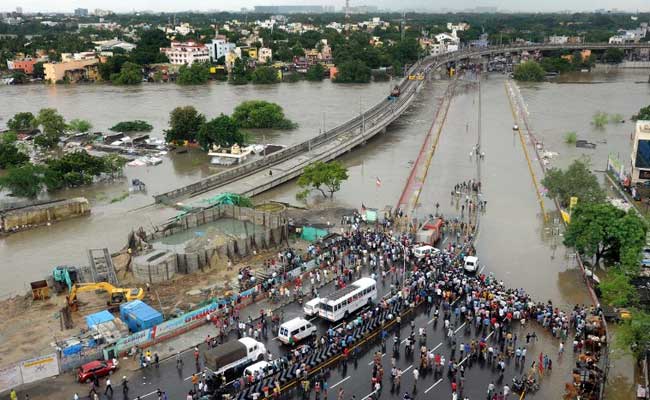
Stranded travellers look an as floodwaters lap at the end of a highway in Chennai on December 2, 2015. (AFP photo)
Army personnel rescuing people during their flood relief operations in rain-hit areas in Chennai on Wednesday. PTI. Source: english.manoramaonline.com
Thousands of people have been rescued by the army and police. Source: bbc.com
The federal weather office has predicted three more days of torrential rains. Source: bbc.com
3 December, 2015. Chennai floods: Death toll crosses 260, Home Minister says situation ‘very alarming’
Terming the situation in flood-hit Chennai as “very alarming”, Home Minister Rajnath Singh on Thursday said in the Lok Sabha that the Centre will extend all possible assistance to the state governments in dealing with natural calamities.
“It would not be an exaggeration to say that Chennai has become an island as it has been cut off from all national and state highways,” he said, responding to a discussion on the flood situation in Tamil Nadu, Pudducherry and Andhra Pradesh.
Sharing concern of members on the magnitude of the calamity, he said the megapolis was witnessing an unprecedented emergency situation with unrelenting rains which was a record in the last 100 years. <...> Source: indianexpress.com3 December, 2015. Rain Stops, But Flood Waters Rising in Parts of Chennai. Here's Why.
There has been little rain in Chennai today and the sun is finally out, but the water level in many of its residential areas is increasing, owing to the excess water released from the dam at Chembarambakkam.
For the residents, what is worse is that the release is being done without warning - in what is understood to be a violation of procedure.In areas like Kotturpuram, where the waters have receded, residents are living in fear that another bout of water will be released from the dam later today.
"What worries us is most is if the worst is over or it is yet to come. The water level is increasing every hour," said a resident in Mylapur, one of the posh areas of Chennai.
"We do not know when the reservoirs are overflowing or how much water is discharged. We do not know when more water will be discharged... We have no power, no internet, or essential items," he added.
<...>
On Wednesday, commissioner of Chennai corporation, Vikram Kapur, said the rivers were still at the danger level and the surplus water was being released into Chennai. "None of the drains can work with such heavy rain. If this kind of rain happens again we are in for a tough time," he had said. Source: ndtv.com3 December, 2015. Andhra Pradesh rain: 54 dead; losses pegged at Rs 3,000 crore
An aerial view of the flood affected areas of the Andhra Pradesh on Nov 18, 2015. [Representational Image] IANS. Source: ibtimes.co.in
Torrential rainfall in some parts of southern India has wreaked havoc in Andhra Pradesh, where at least 54 people have been reported dead.
Rain lashed the Nellore, Chittoor and Prakasam districts of Andhra Pradesh, bordering Tamil Nadu, on Wednesday.
The heavy downpour in the last two days has caused flooding in low-lying areas of Nellore, Chittoor and Prakasam. Streams and tanks were reportedly overflowing.
Normal life in some parts of the three districts has been crippled due to the heavy rain. At least 5,000 people in the Nellore district have been shifted to 50 relief camps.
The showers damaged crops and disrupted road and train services in the affected regions, an IANS report quoted officials as saying. <...> Source: ibtimes.co.in
3 December, 2015. India’s Tamil Nadu grapples with worst floods in a century
The heaviest rainfall in more than 100 years has devastated swathes of the southern Indian state of Tamil Nadu, with thousands forced to leave their submerged homes and schools, offices and a regional airport shut for a second day Thursday.
At least 269 people had been killed in the state since heavy rains started in the beginning of November, said India’s Home Minister Rajnath Singh, although no deaths have been reported in the latest deluge.
“I can’t even believe that this much water was possible in Chennai,” one woman told NDTV channel as she stood in waist-deep water in the state capital.
“We don’t have any food. We don’t have any milk,” she said, adding that she had stepped out to see if she could find a shop selling some food. “But I’m scared to walk down this road. The water comes up almost to my hips.”
Chennai has received more than 330 millimeters (13 inches) of rain over the last 24 hours, which is significantly higher than the regional average for the entire month of December, Singh said.
While the downpour eased early Thursday, the Indian Meteorological Department has predicted more heavy rain in several parts of the state through the rest of the week. The rains have been caused by a depression in the Bay of Bengal, the agency said.
Separately, news reports said that flood waters released from a lake on the outskirts of Chennai inundated more neighbourhoods in the city. The Adyar river, which runs through Chennai before draining into the Bay of Bengal, was flowing above a danger mark. Source: globalnews.ca
SEARCH PS Ning or Zetatalk
This free script provided by
JavaScript Kit
Donate
© 2025 Created by 0nin2migqvl32.
Powered by
![]()
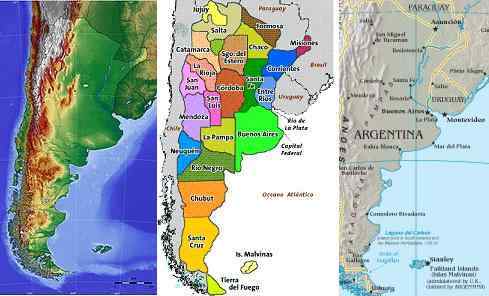

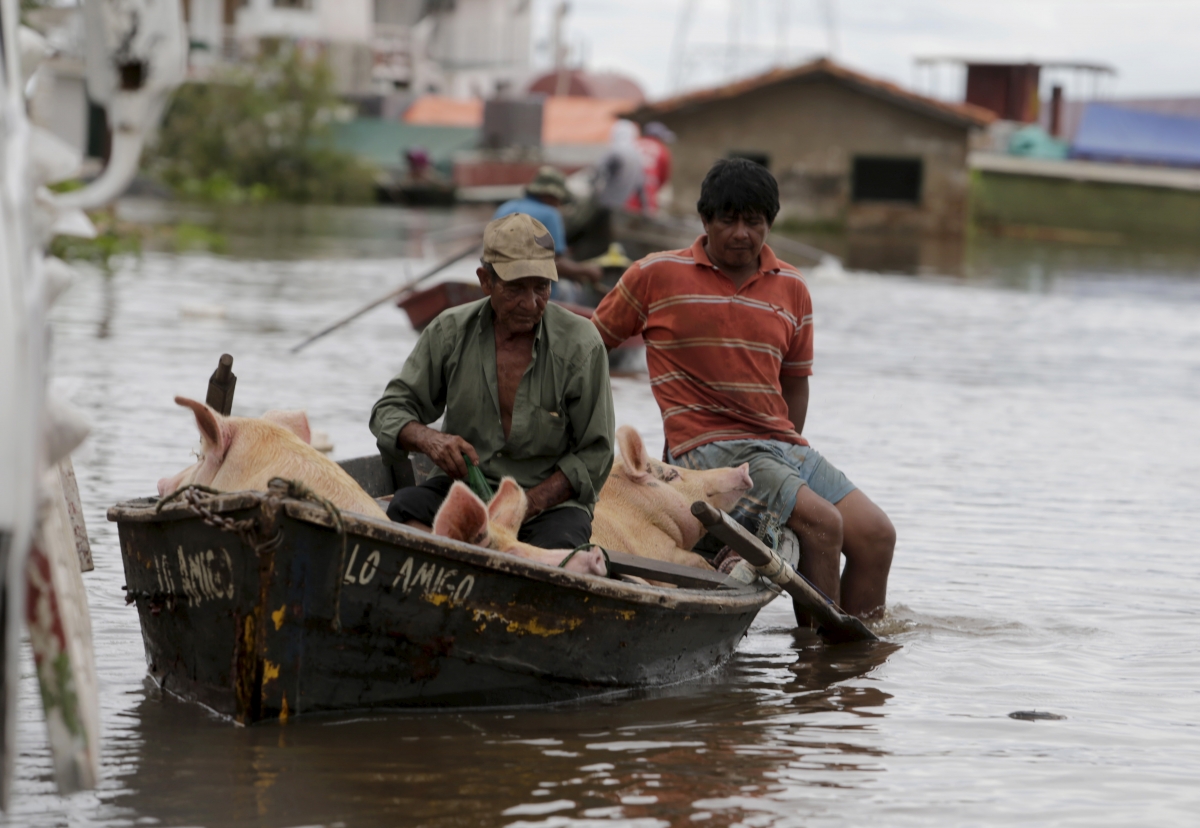







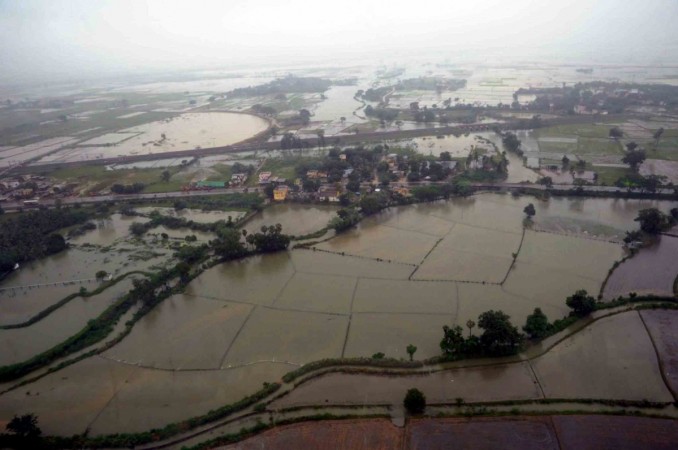
You need to be a member of Earth Changes and the Pole Shift to add comments!
Join Earth Changes and the Pole Shift